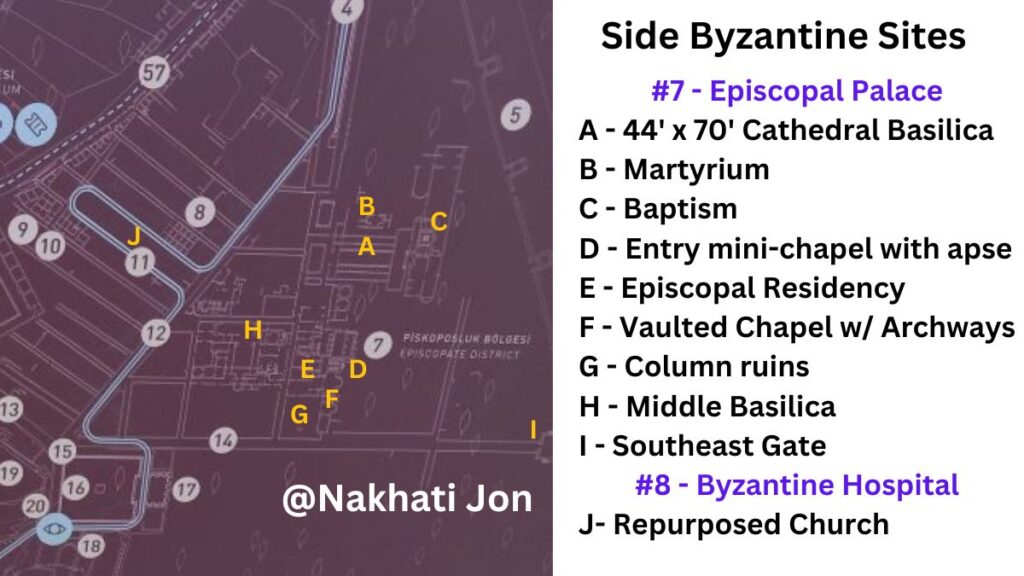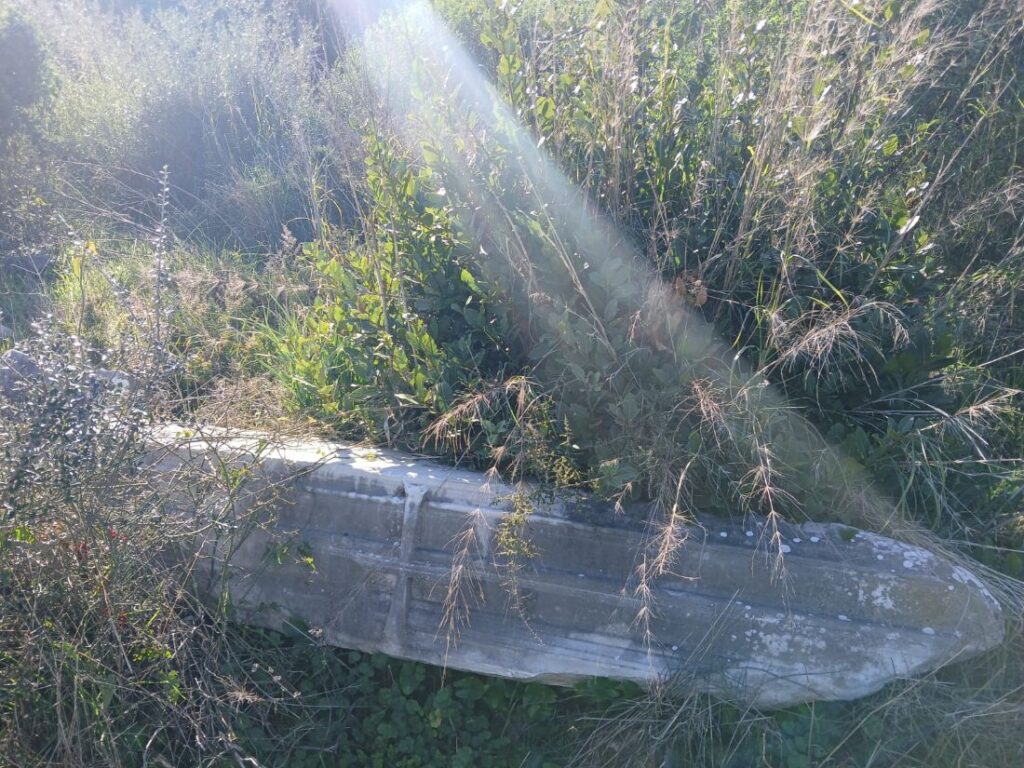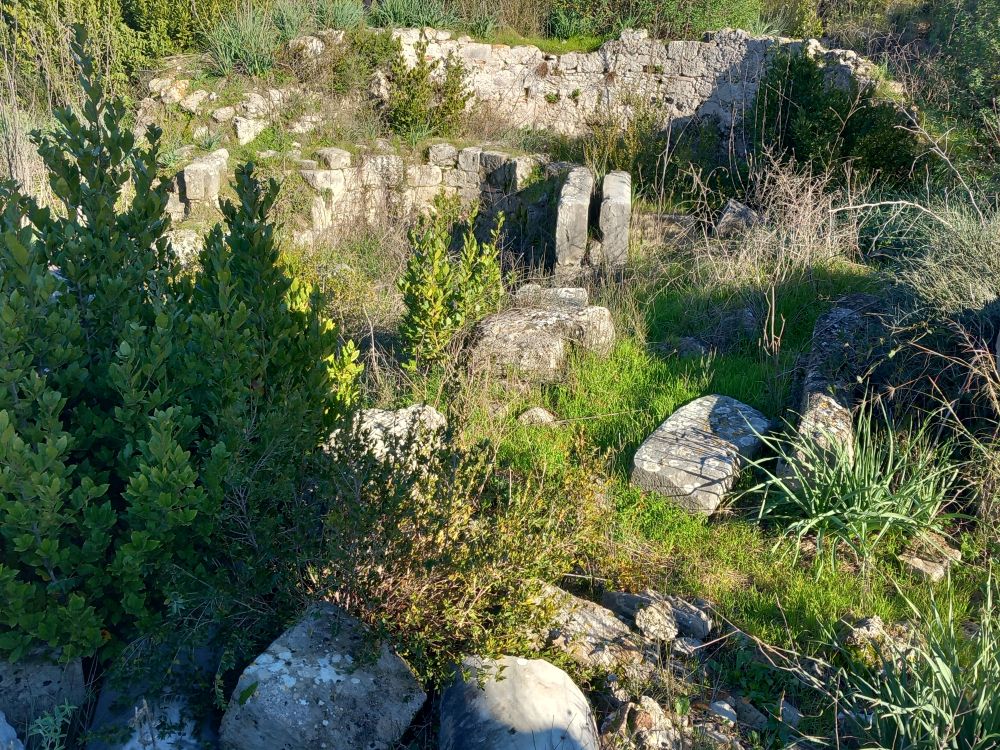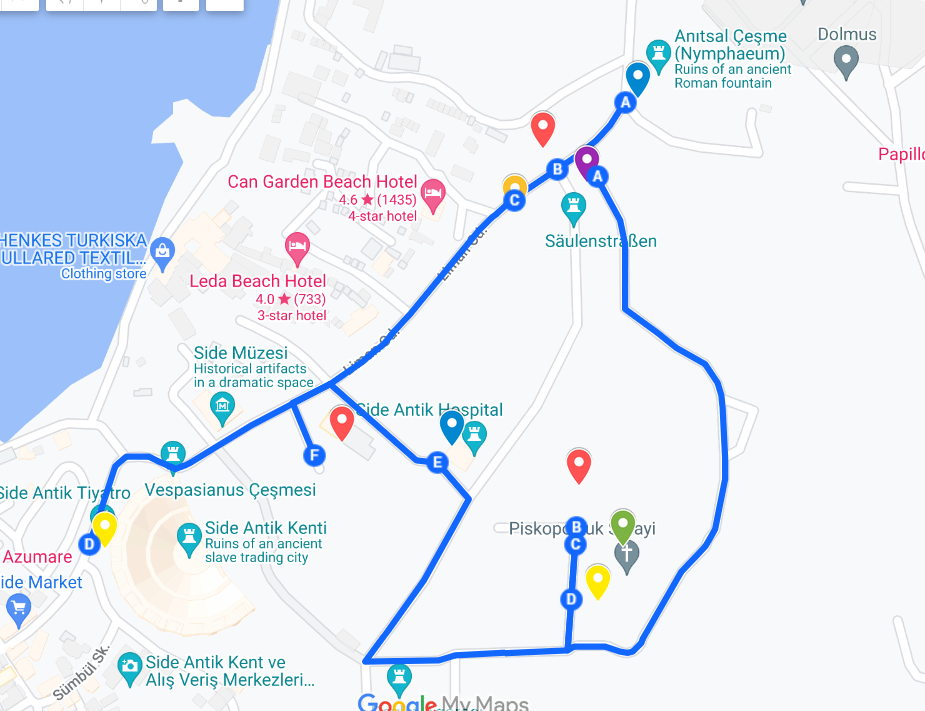- The Byzantine Episcopal Influence on the History of Side, Pamphylia
- Exploring Side, Pamphylia Hidden Byzantine Monuments
- The Lost Metropolis Episcopal Palace in Side, Pamphylia
- Discovering the Repurposed Chapel in Side Open Air Museum
- The Hidden Mosaics among the Side Market Shops – Part one
- The Hidden Mosaics among the Side Market Shops – Part Two
- The Hidden Mosaics among the Side Manavgat Shops – Part 3
- Hidden Things From Side’s Fountain to Grand Theater
- Hidden Crosses in the Side Archeology Museum
- Side’s Fascinating Basilica near Apollo Temple
- Analyzing the 12 churches and chapels of Side, Pamphylia
- Analyzing the Synagogue in Side, Pamphylia
Among the ruins in the Side Ancient City, one can find some amazing Byzantine structures that are often neglected during one’s visit. Side was a key city that promoted Christianity in the Pamphylia region. Let’s explore these churches to gain insights into the faith of Christ here.
The Side Ancient City, an open-air museum, hosts numerous ancient Byzantine monuments, while the shopping area on the peninsula of Side shows the extensiveness of a Mosaic culture.
One can find my walking map of the Open Air Museum here.
First, let me say that the source of material for the Side Ancient City (East Pamphylia) is quite limited. In my online research and multiple visits there, my observations often lead me forward more than any archeology publications. Please let me know if one has more accurate information so I can update this blog. Thanks.[1]Gives a good oversight of the process, but these endeavors, have not pursued a strong Byzantine emphasis – https://dergipark.org.tr/en/download/article-file/2449828
Please look at my map to understand the Byzantine monuments and ruins in the Open Air Museum. Most items are not listed on the museum’s site map index.

Middle Church
The central colonnade walkway directly headed to this Middle Church just west of the Metropolitan Complex. I call this the Middle Church because this area was central to the colonnade and between the Episcopacy Palace and the Agora area. Check out my exploration video below, which shows you how to get there and what is observable.
A cross-bearing marble post marks the way when one enters this area just beyond Colonnade Street. On both sides of this entryway, there are marble posts for observation.


The apse of the Middle Church faces east and just west of the Episcopal Palace. Possibly, the Palace was connected to the church, but on the palace map, they do not include this basilica in this location. Actually, on all maps of the ancient city, I did not see this basilica listed. Even the drawings of the palace are excluded since there is an ancient walkway between the two.
Metropolitan Complex and Dwelling
The displays on the Side Episcopal Palace Map confuse the tourists. Please see my explanation of how to look at this map.
Episcopal Baptism Site
The Baptism site is often confused in numerous write-ups online. My visit there again confused me till I realized the map of the Episcopal Palace sits upside down on the Museum display. I searched for the baptism but realized this was another outdoor atrium-like area most likely used for public events. The area is overgrown, and giving any meaning to what one looks at is quite challenging.

In this write-up, and my next, clarity will come for those willing to sift through the diagrams and videos.
Unfortunately, I did not realize the map diagram was upside down, yet I must have found a significant area of the Episcopal palace. On my next trip to Side, I will seek the baptism near the Cathedral Basilica. The next write-up will explore the Episcopal Residency.
Check out my walking tours of Antalya, the other main ancient port in the region.
My books explore the difference between Islam and Christianity if you are interested.
References
| ↑1 | Gives a good oversight of the process, but these endeavors, have not pursued a strong Byzantine emphasis – https://dergipark.org.tr/en/download/article-file/2449828 |
|---|

[…] Exploring Side, Pamphylia Hidden Byzantine Monuments […]